Video and photographs of two antique tintype portraits, including one held in an incredible, ornate, and rare thermoplastic case
I bought these two antique tintype portraits online as part of an estate auction. I’m estimating both were probably made in the 1860s. The estate auction was held in a small town in Tennessee, very close to the Alabama state line. I don’t know who the subjects were, or whether they lived locally.
Badly degraded tintype portrait of a young man
The portrait of the young man is unremarkable except for its very poor condition, with the collodion emulsion flaking away from the iron base plate.
As you can tell from the cobwebs, it wasn’t properly stored.
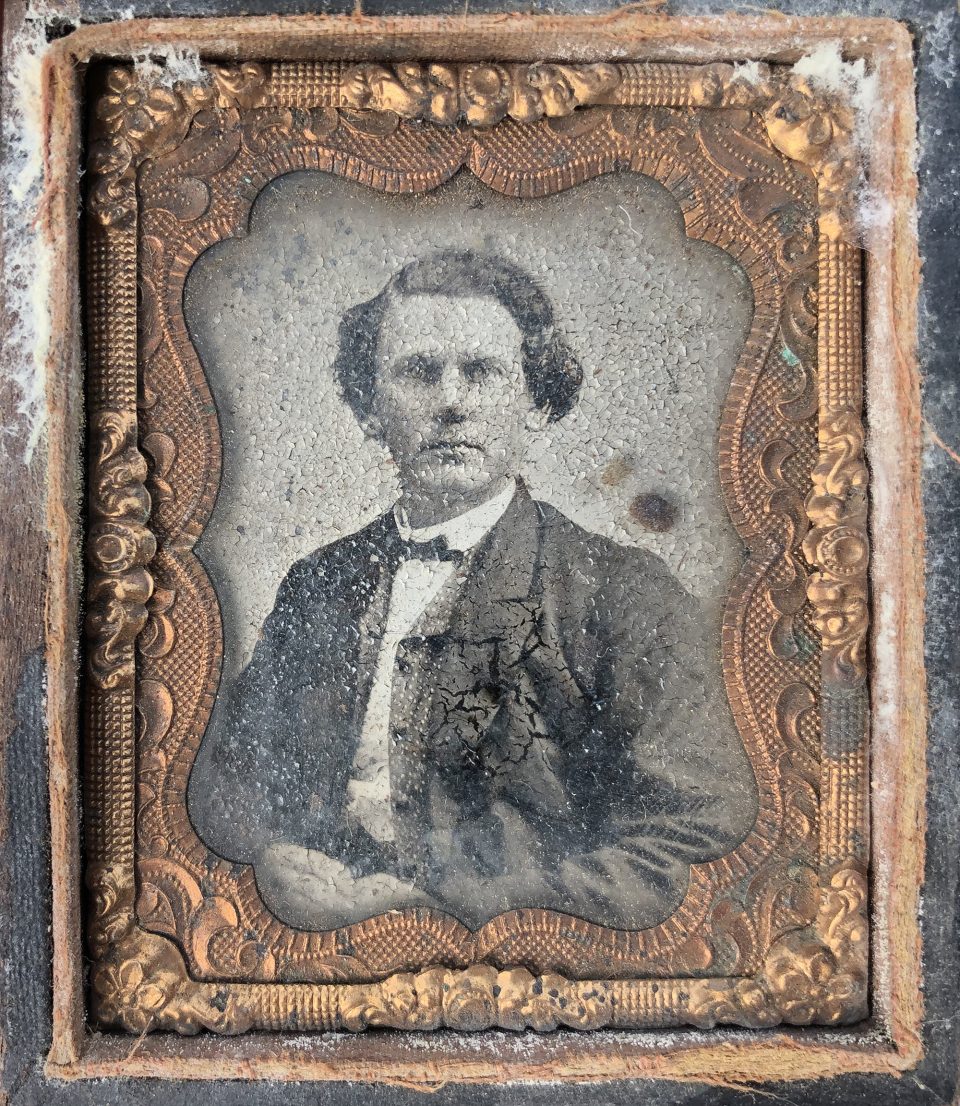
It’s too bad because I think it was probably a nice portrait. Check out that polka dot vest he’s wearing.
Portrait of a mother and child in a beautiful thermoplastic case
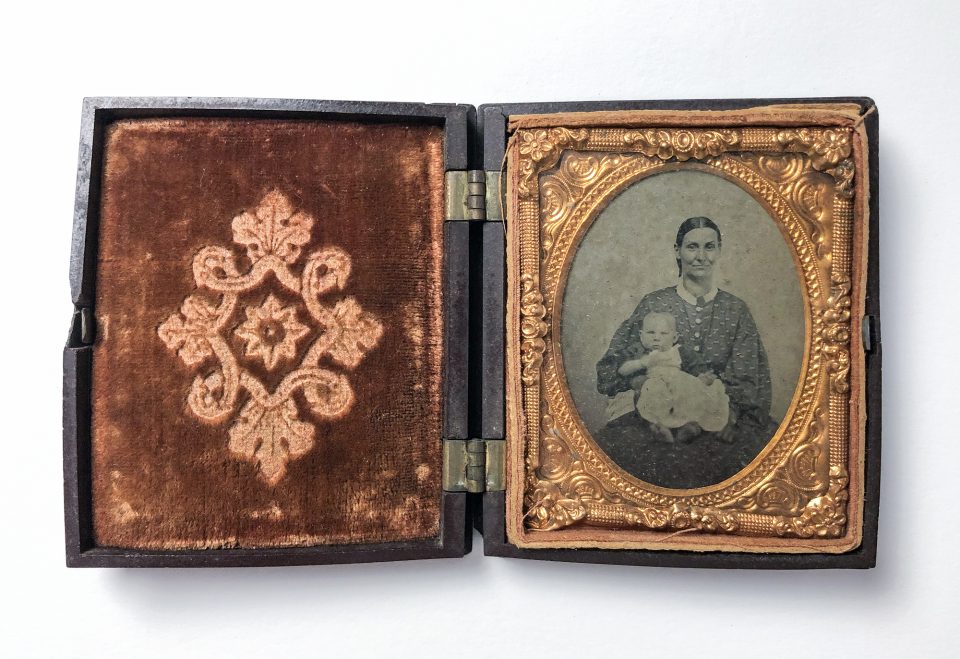
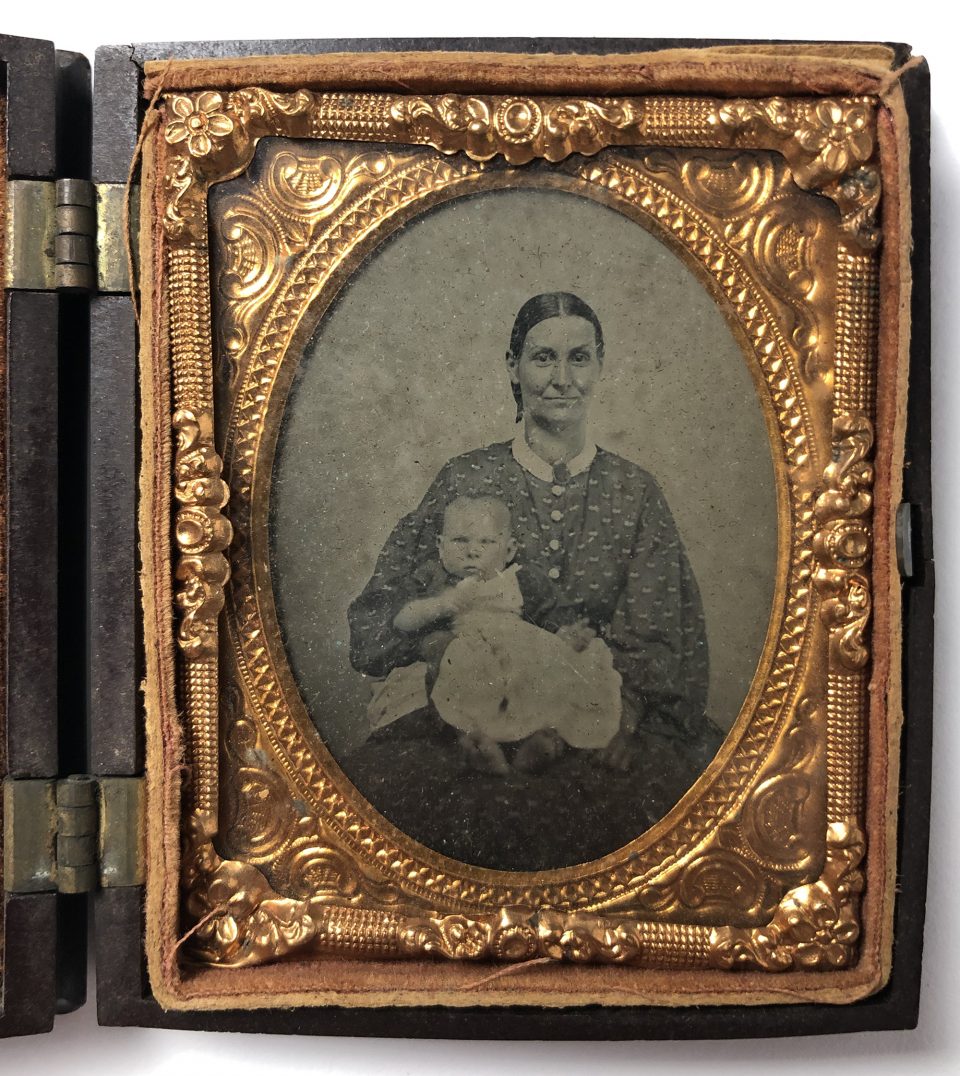
This is a rare 1800s portrait where the subject is actually smiling. She did a remarkable job holding herself and her baby still for the length of the exposure. Only one of his arms and his feet are blurry.
This is a tintype, imaged with the wet collodion process on a thin sheet of iron that was coated with black lacquer in a process they called Japanning at the time — because of Japanese black lacquer goods.
The black lacquer actually makes up the blacks in the image, whereas the developed silver emulsion makes up the highlights.
I enjoy knowing I can hold in my hand the exact same object that this woman in the photo surely held in her hand too. It’s a direct connection to a person who lived in the 1860s.

Thermoplastic Union case made by Holmes, Booth & Haydens of Waterbury, Connecticut
This is the first photograph with a complete case that I’ve ever bought. Usually, the cover is missing. But this case is a doozie.
It’s very ornate and looks like carved wood, but it’s actually made of an early version of thermoplastic, which was made from a mixture of sawdust, coloring agents, and gum shellac, all pressed into a steel mold.
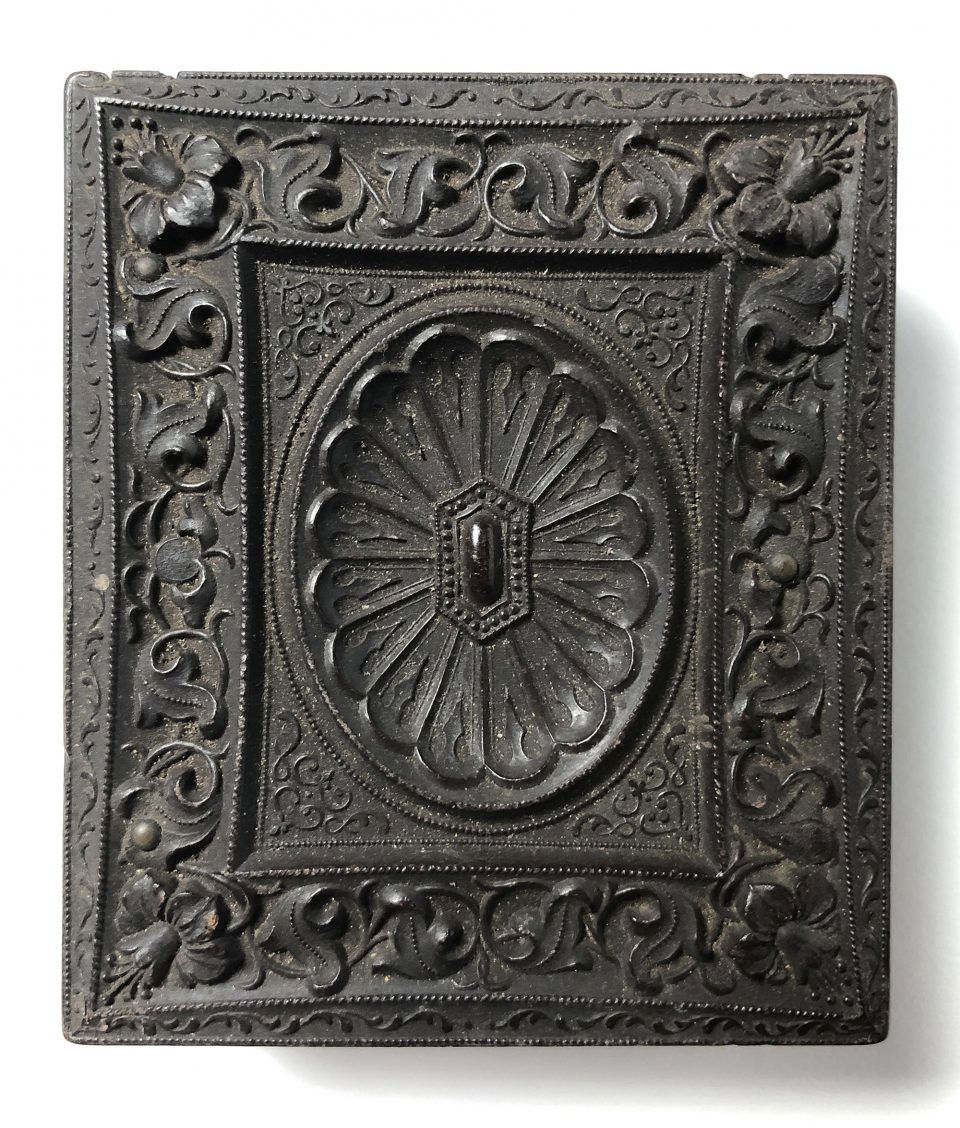
These cases — called “Union” cases because they are made of a union of those ingredients — are quite collectible with cases made by some manufacturers being quite valuable. They were made from 1853 through the 1860s until demand began to dwindle. They were invented for daguerreotypes but also were used for Ambrotypes — prints made onto glass — and tintypes like this one. In many instances, the case is much more valuable than the photograph it holds.
It has a velvet lining on the inside of the lid, and those shiny pressed foil mats are made of brass.
This model has two substantial hinges called “embracing riveted hinges,” which seem to have stood the test of time.
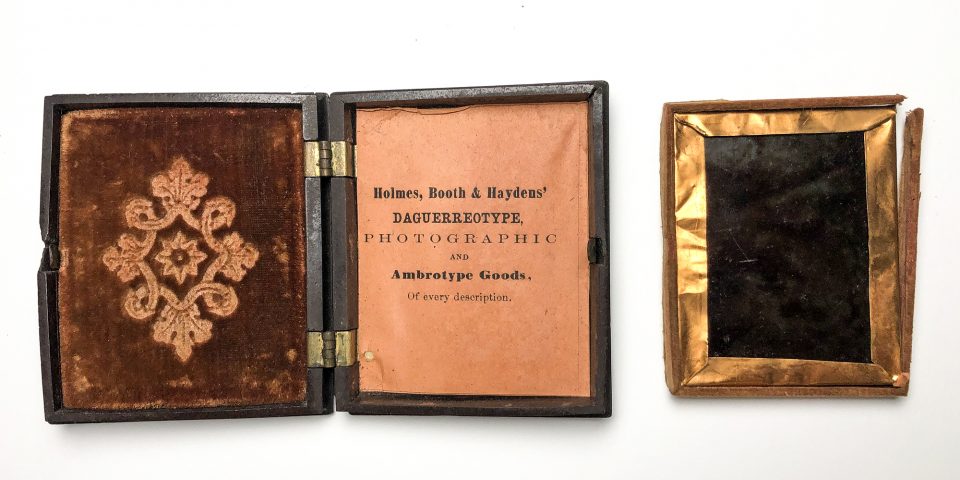
If we carefully remove the image bundle from the bottom of the case, we can see the maker’s mark. It was made by Holmes, Booth & Haydens, a Waterbury, CT. company that probably also made the foil mats and possibly even the lacquered iron sheet. They are known to have made silver-plated copper sheets for daguerreotypes. They also made cameras and lenses as well as many other kinds of non-photographic metallic household goods like silverware and buckets.
The label says:
“Holmes, Booth & Haydens’
Daguerreotype,
Photographic
and
Ambrotype Goods,
of every description.”
Thanks for reading.
Be sure to visit me on Instagram, YouTube, or Pinterest, or on my website at keithdotson.com.
~ Keith
Links and Sources
Citrus County Chronicle, “Case for daguerreotype is more valuable than picture,” John Sikorski
Historic Camera, “Holmes, Booth and Haydens Company”
Luminous-Lint, “History of the Miniature Case,” Paul K. Berg
Sturgis Antiques, “Quarter Plate Thermoplastic Case Holmes, Booth and Haydens’ Daguerrotype Ambrotype Union Case”
The Lampworks, “A brief historical profile of The Holmes, Booth & Haydens Company”
